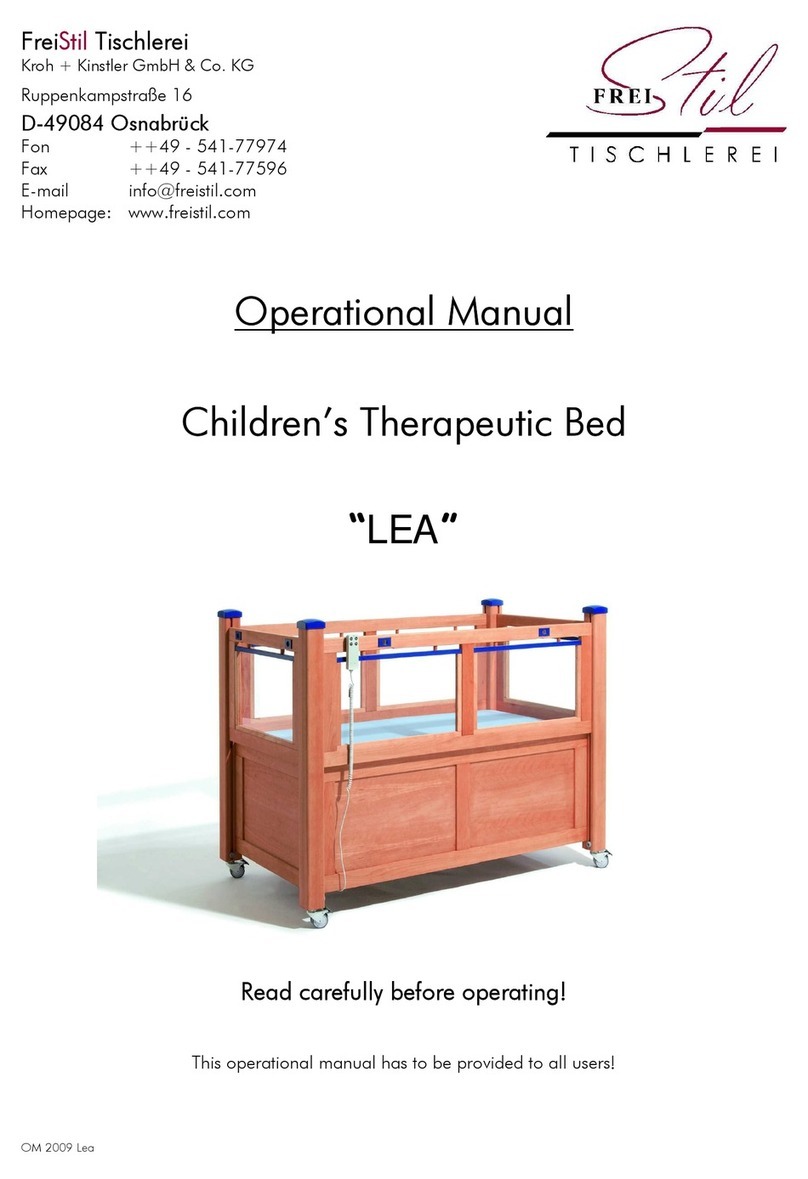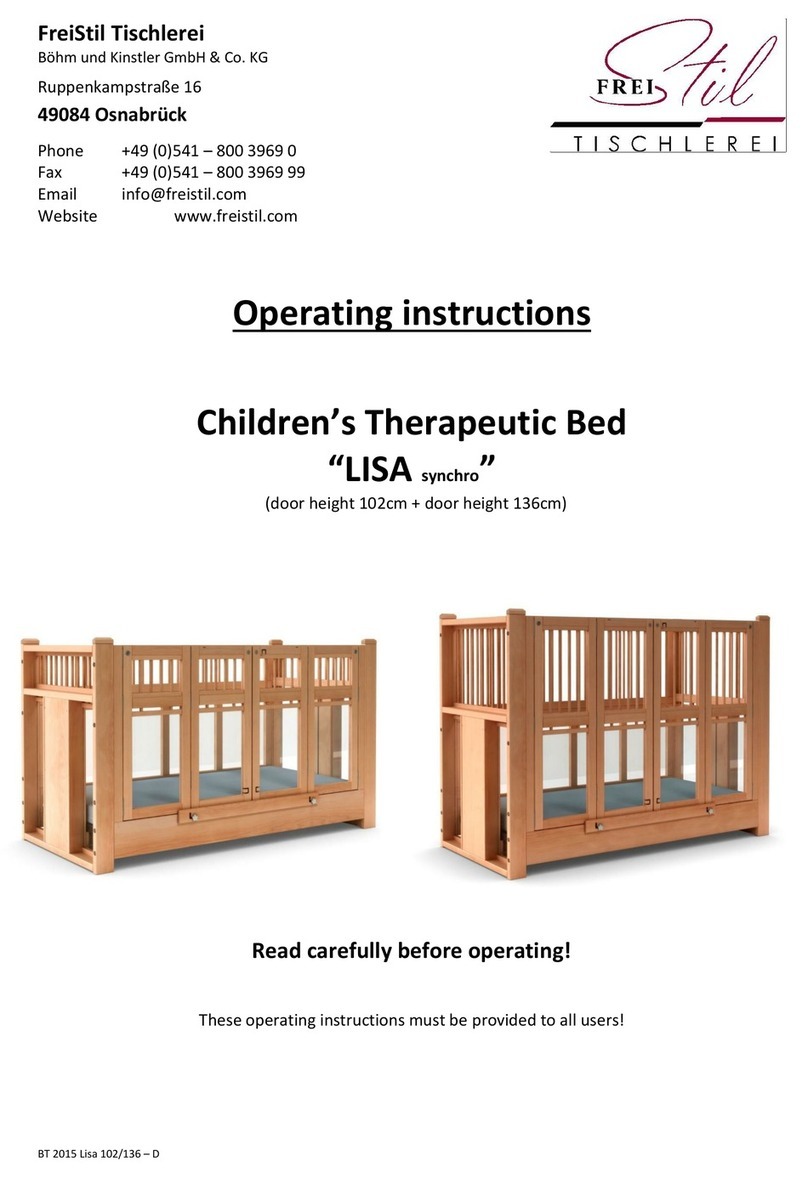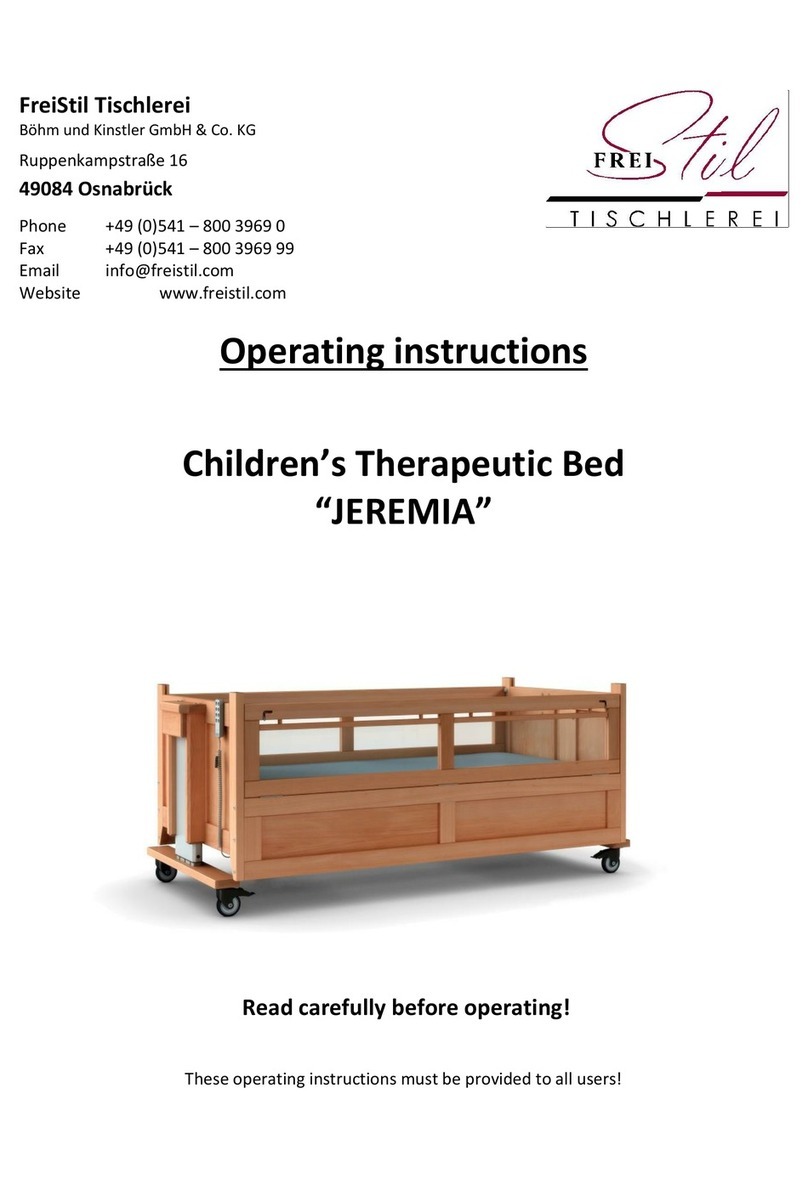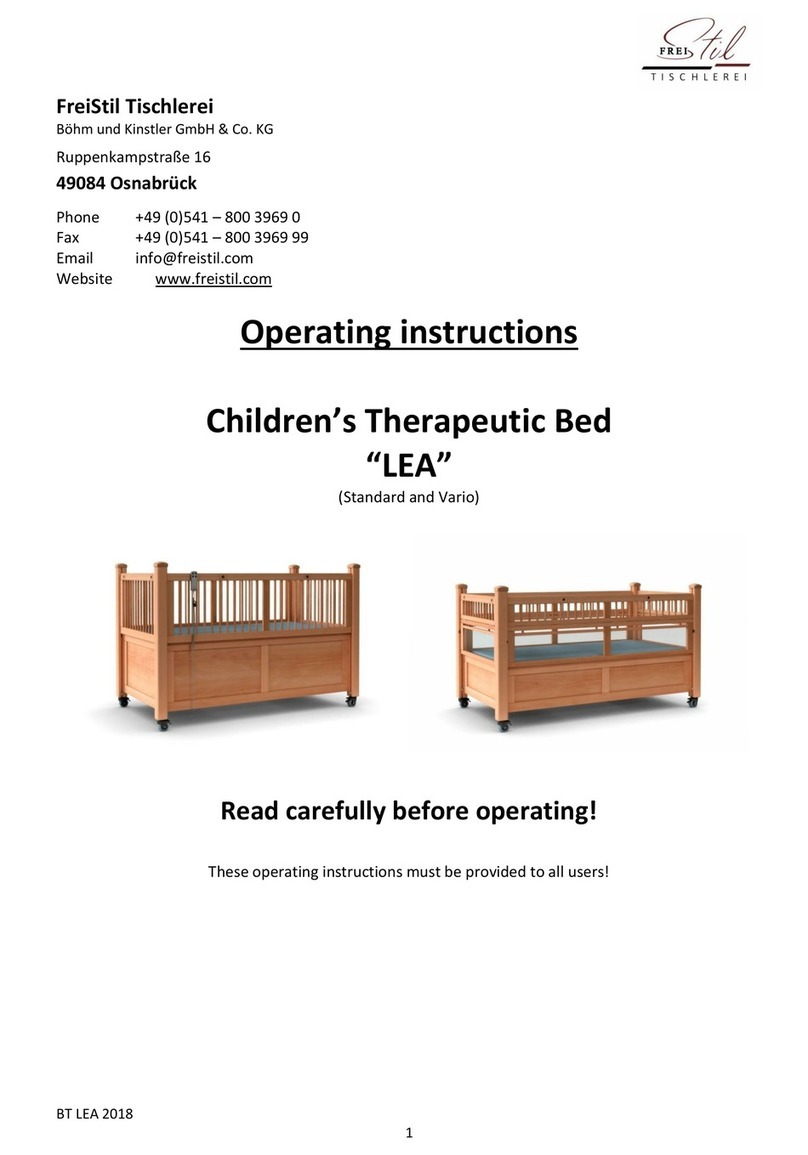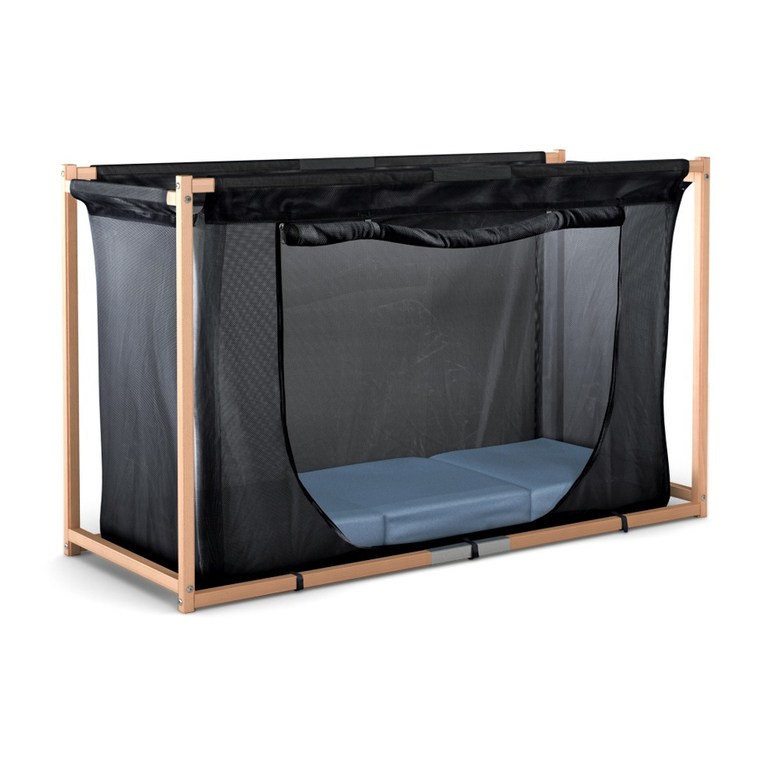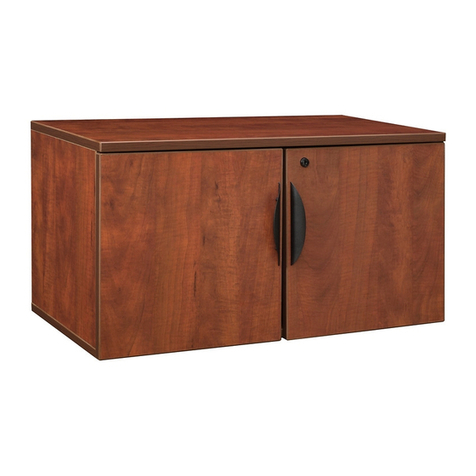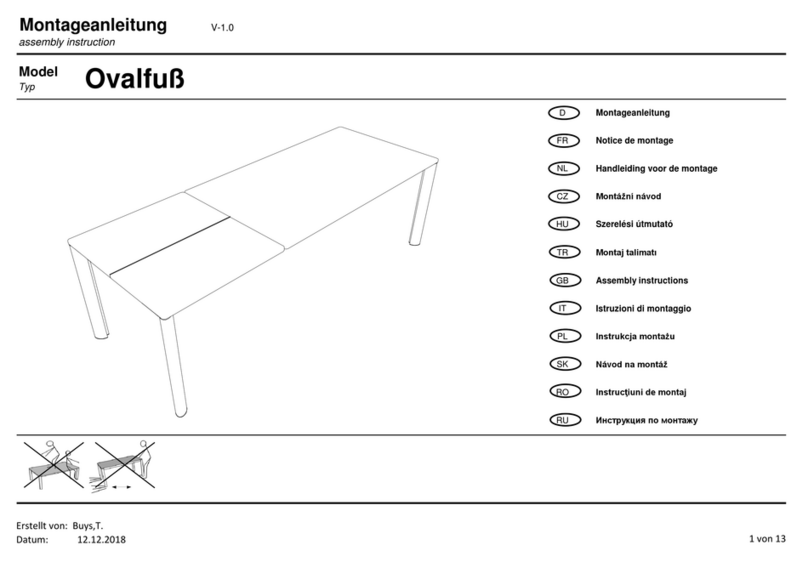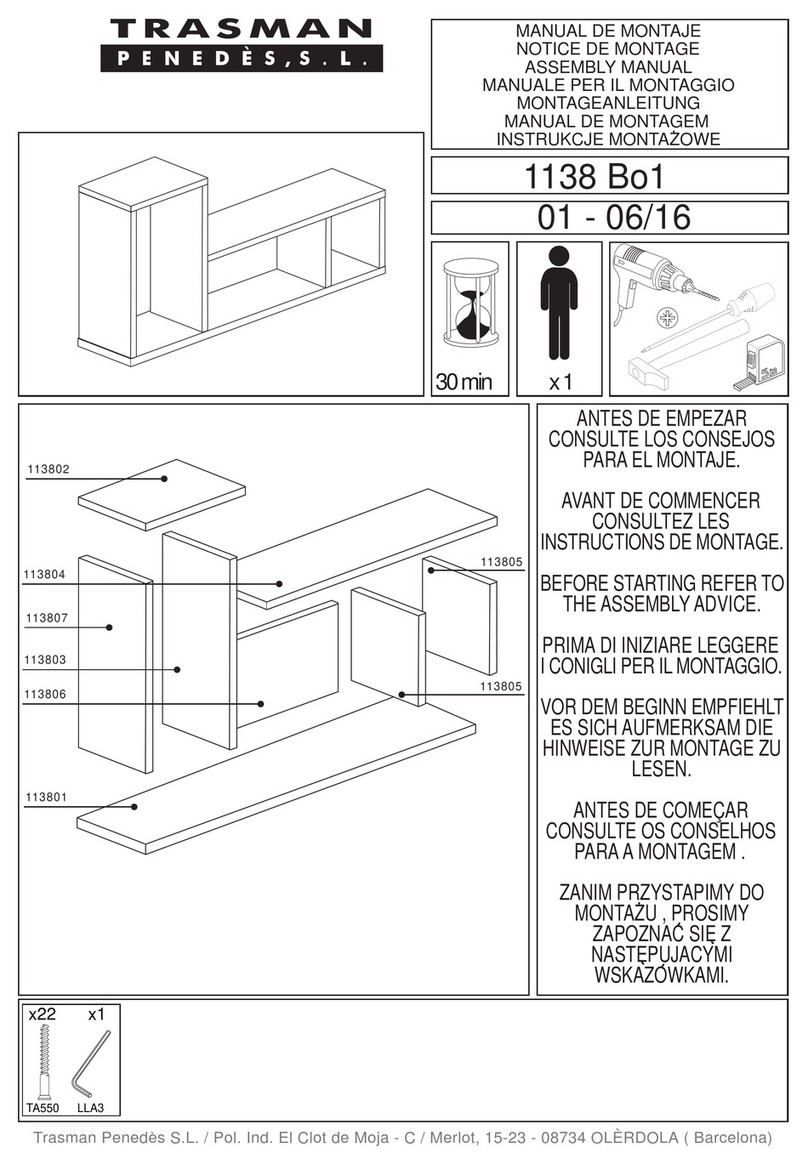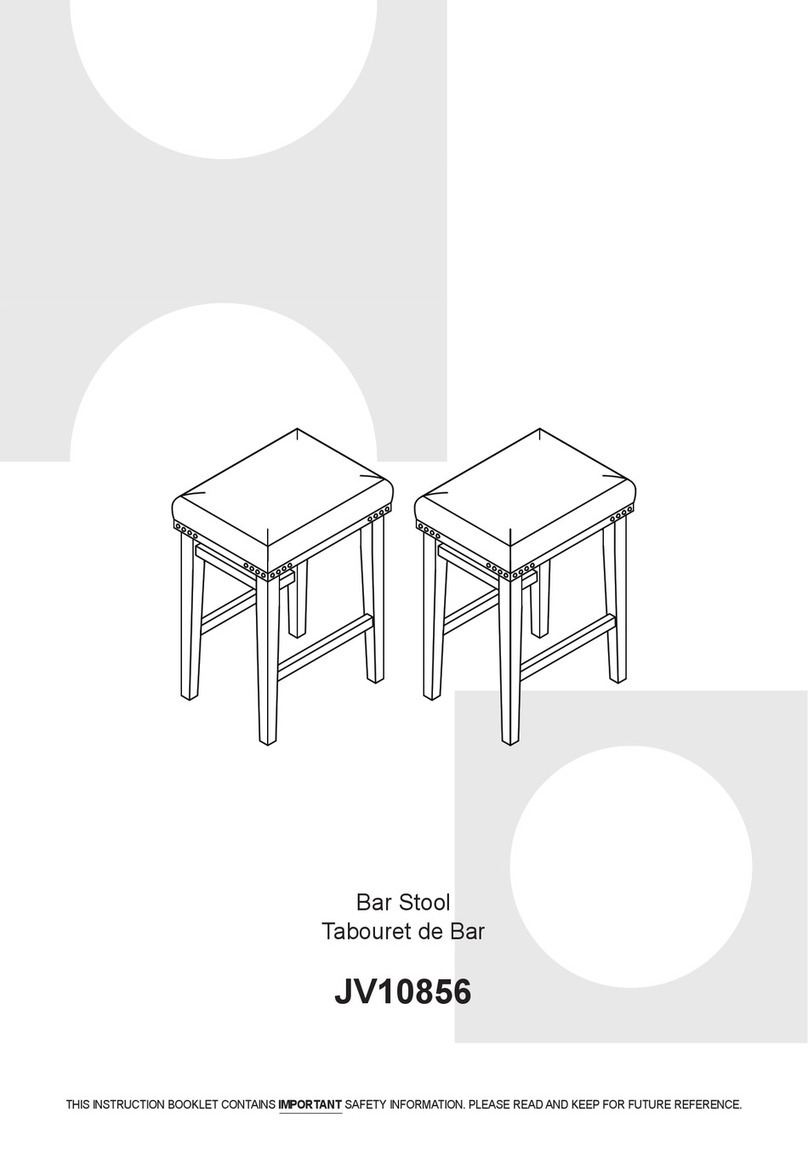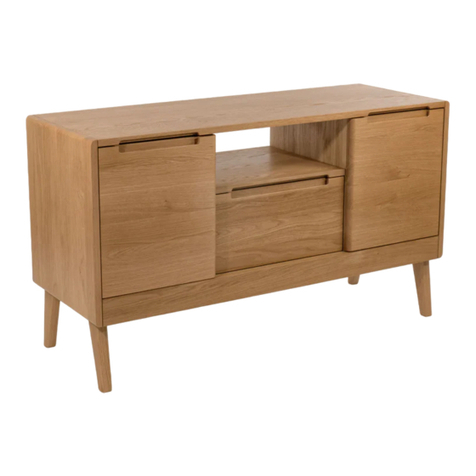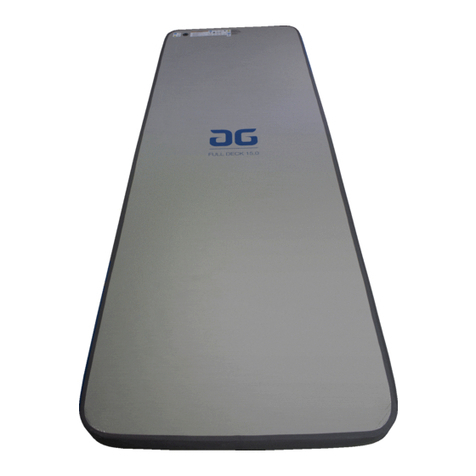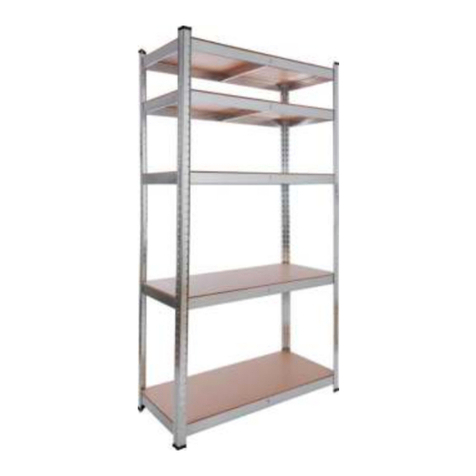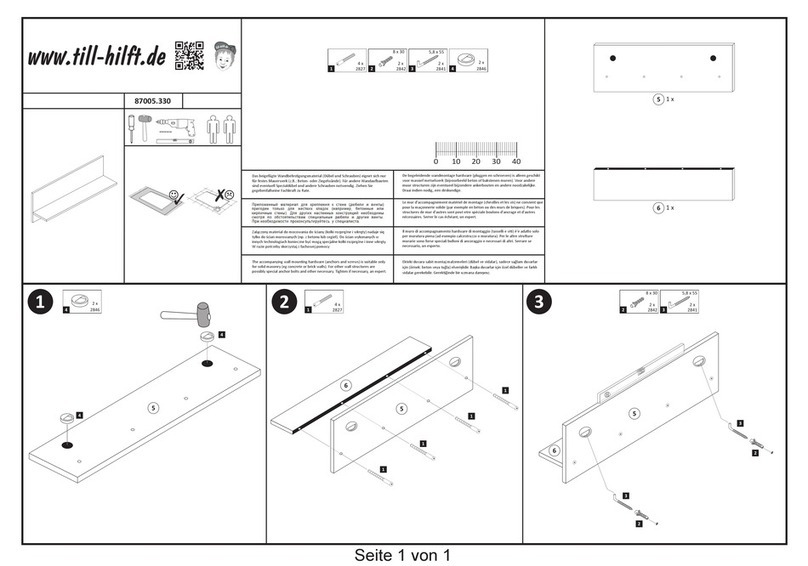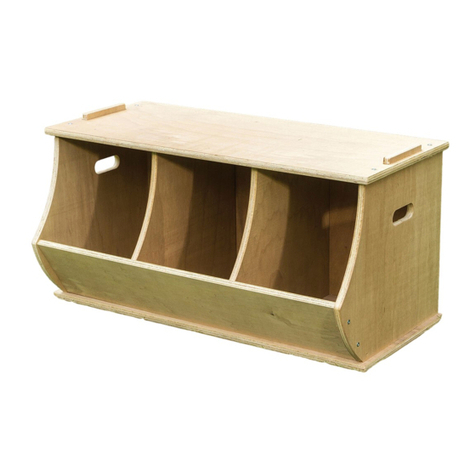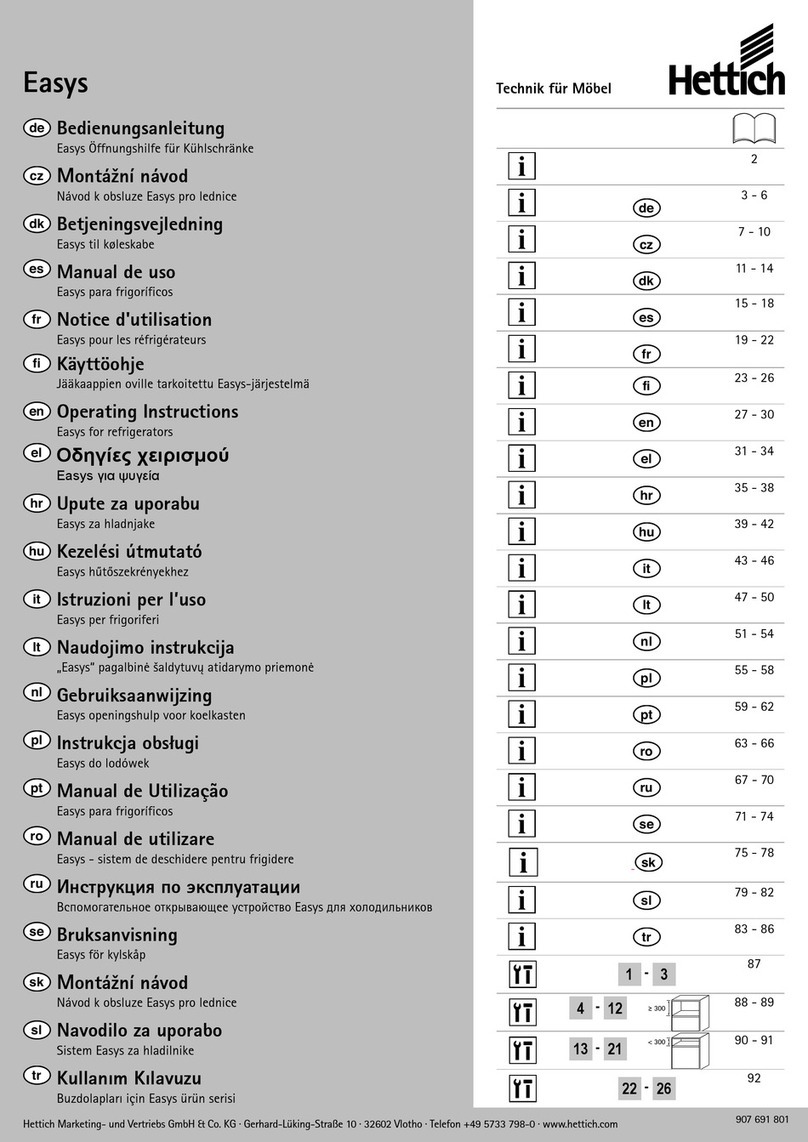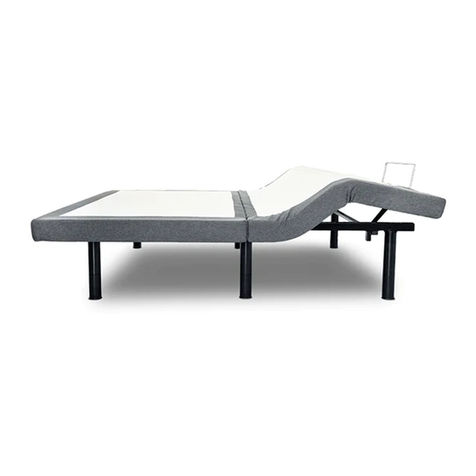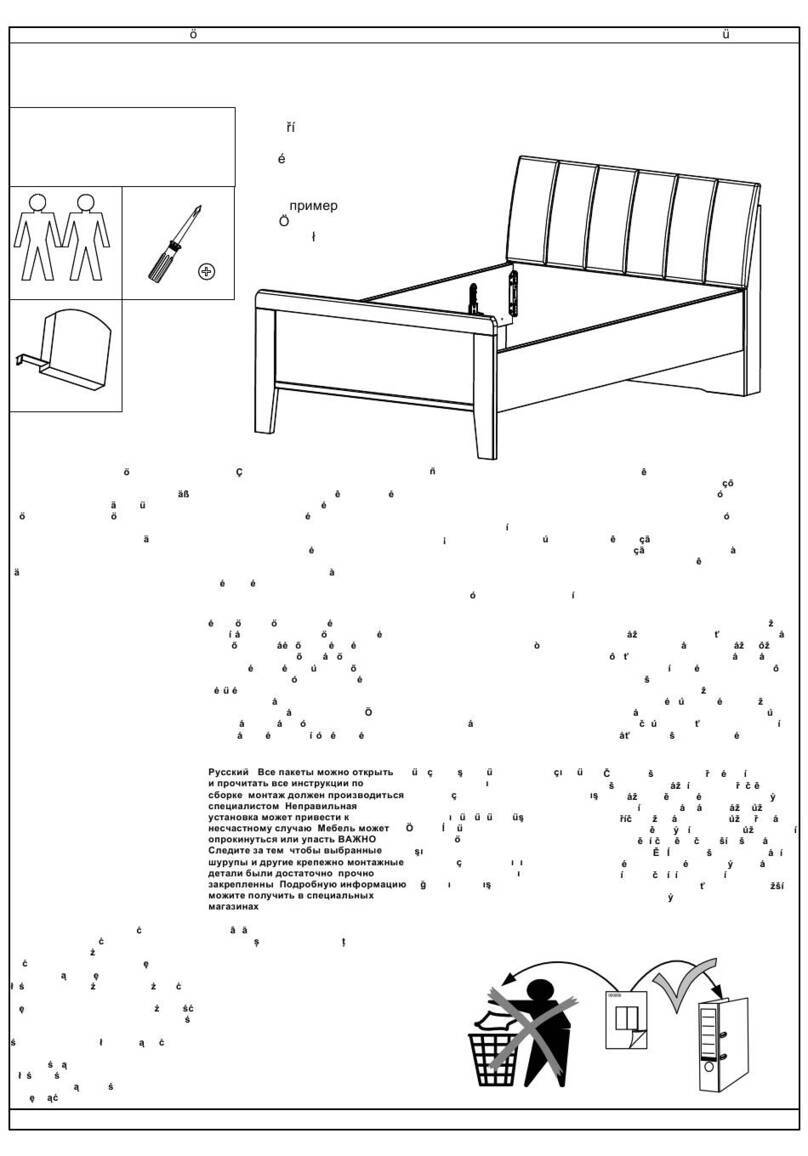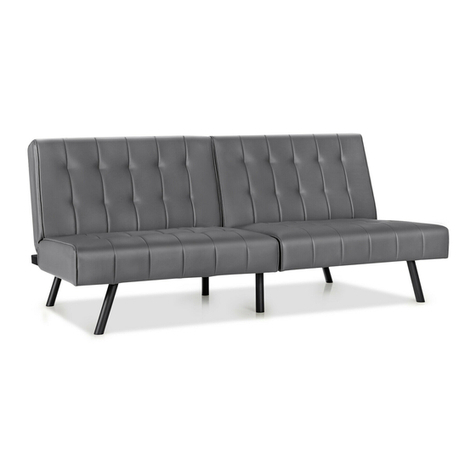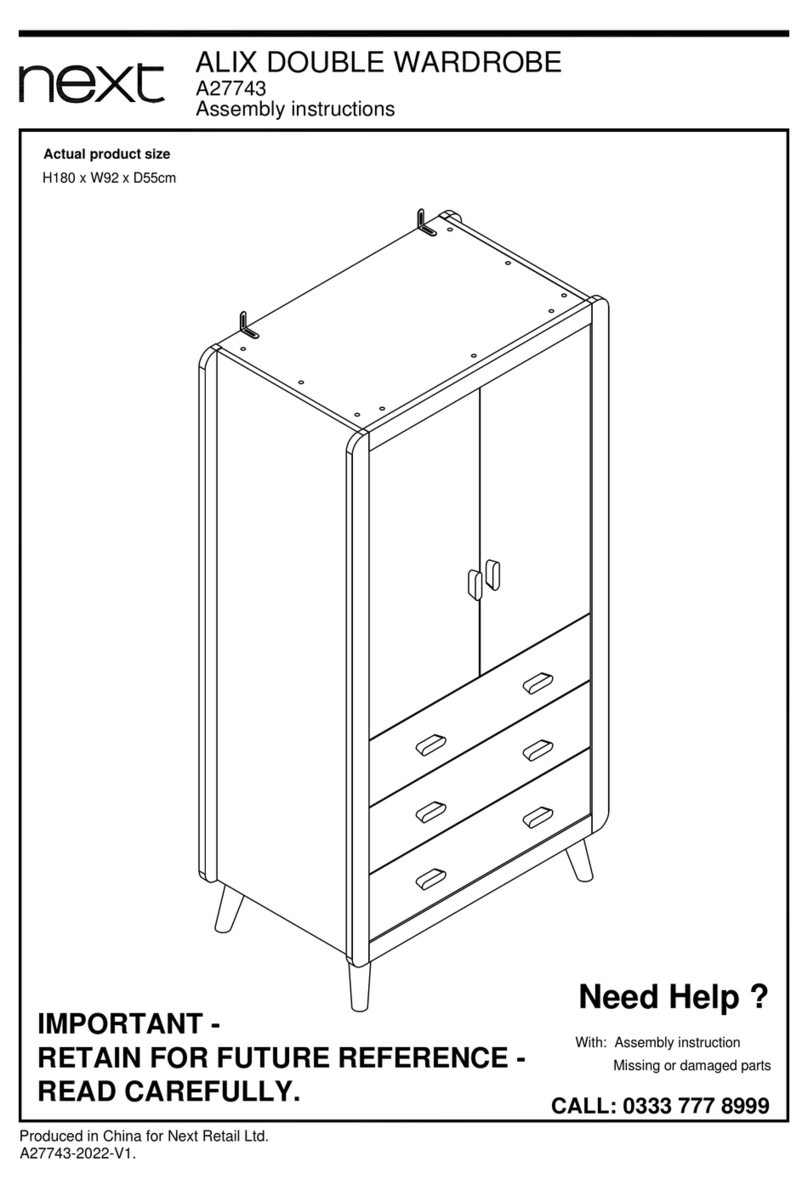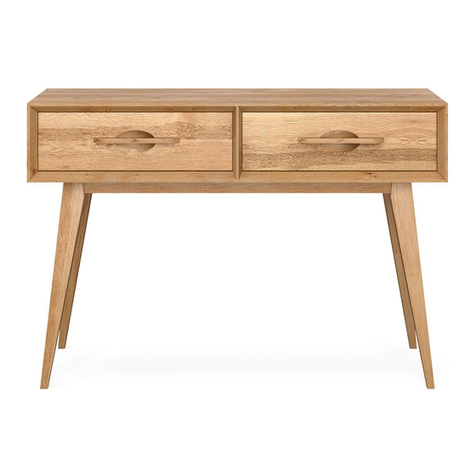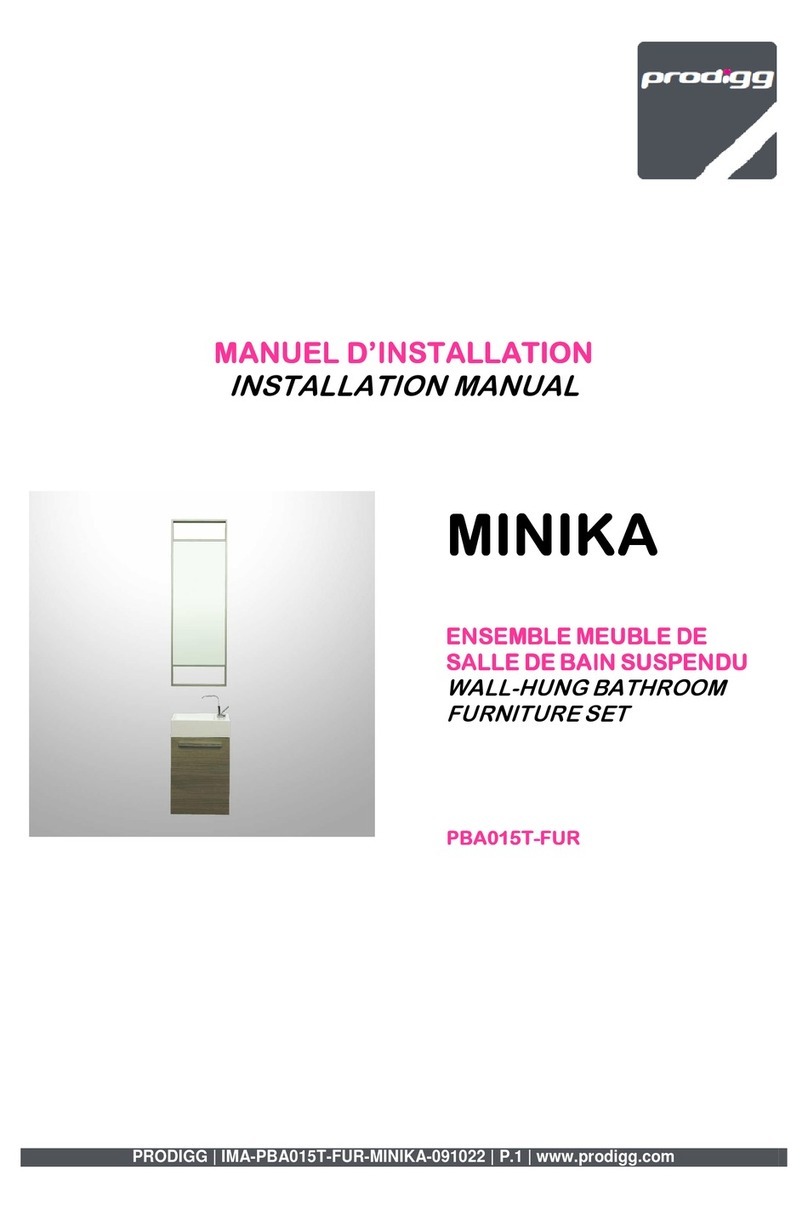
BT 2018 Lukas 136/170 –01 Version –05/2018
III. The lowest setting of the bed base is the safest and this is the
only one that should be used, unless another setting is
required for therapy and treatment purposes.
Following therapy or treatment, always move the lifting unit
down to the lowest position.
IV. When adjusting the lifting unit, do not place any parts of the body
inside or underneath moving parts. There is a RISK OF CRUSHING.
V. The “LUKAS” children’s therapeutic bed is intended for use only in
dry rooms and must only be operated and stored in
these conditions. The system must only be connected to a
conventional 230-volt socket. The cable and plug must be dry and
must not be crushed or abraded at any location. Make sure that all
cables are routed and connected correctly at the points provided.
VI. In order to prevent overloads or defects to the electric motors, a maximum
duty cycle of 2 minutes must not be exceeded.
The electric adjustment of the head end or foot end must only be used to
lift and lower the upper body or legs (observe the position of the patient in the bed).
Overloading causes damage and is not permitted!
Overloading the mechanical components causes damage and is therefore not permitted. (see
operating instructions, item 2.3 + 2.4 and type plate)
VII. In the event of misuse, improper use, incorrect operation or incorrect assembly/repair, no
liability will be accepted for any damage. In such cases, all warranties are also excluded.
VIII. The drives must not be operated in the presence of flammable gases or vapours.
IX. The “LUKAS” children’s therapeutic bed must only be operated with original accessories and
maintained using original parts. The use of mattresses that are incompatible with this bed can be
hazardous. Please observe the technical data (item 3/page 11.0 et seq. of these operating
instructions).
X. If any malfunctions occur, inform your sales agent immediately.
In particular, disconnect the power and do not operate the device in the event of damage to
electrical or mechanical parts.
XI. Avoid the improper routing of electrical cables for other devices in the bed for medical
use. Risk of crushing between moving parts of the bed.
2.3 Warning notices
I. If the patient is not supervised, the lifting unit must be moved to its lowest, horizontal position.
The revolving doors must be locked.
II. Do not leave anything in the bed that could be used to climb on or that may result in a risk of
suffocation or strangulation.
III. Only trained persons or the nursing staff are permitted to adjust the lifting unit. The patient
themselves must not adjust the bed.
If the patient is alone, all functions must be locked (see item 2.6 Manual control unit).
